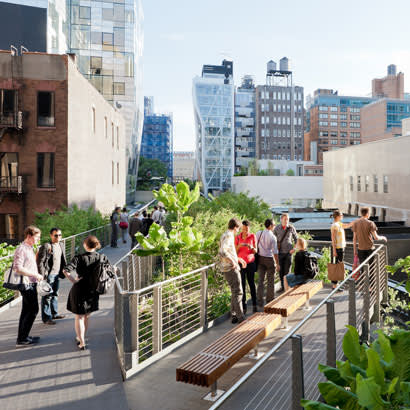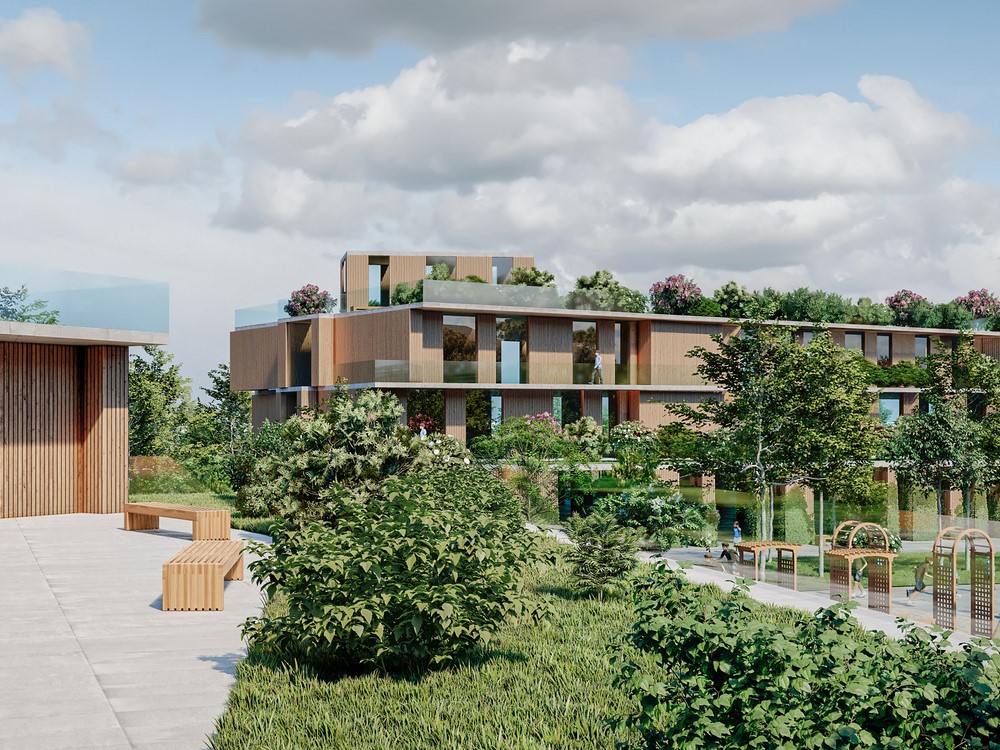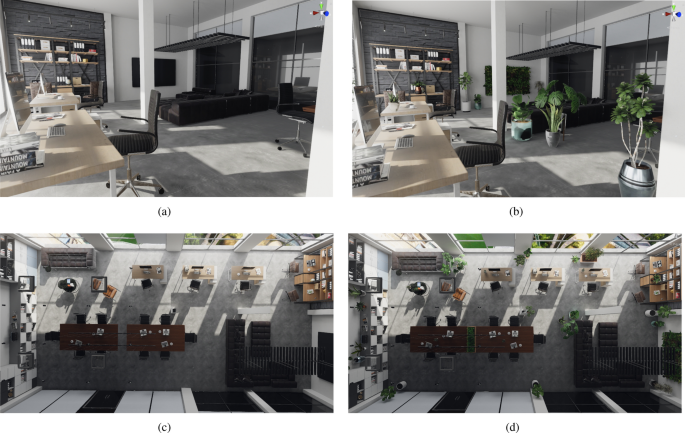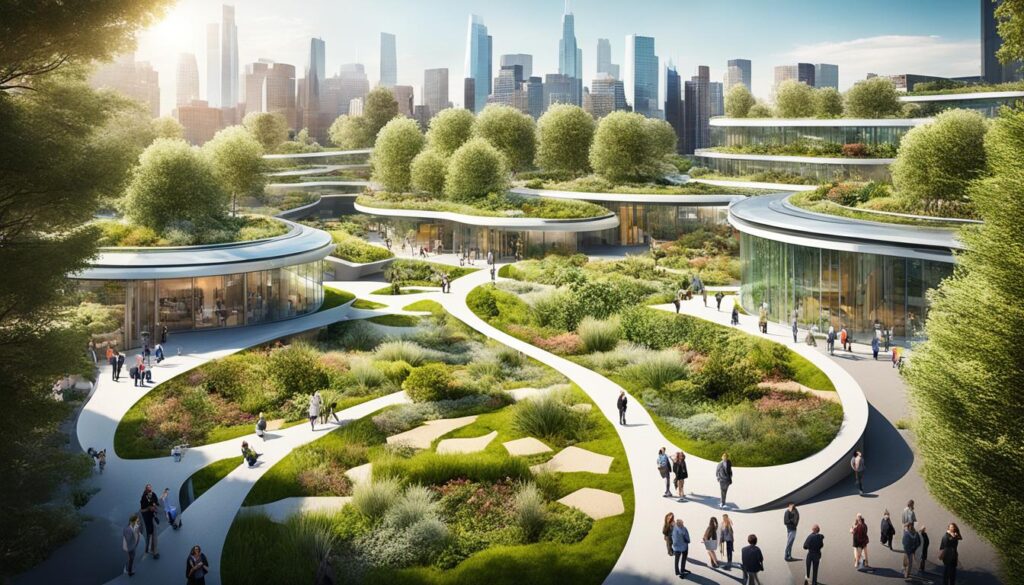The Next Generation of Urban Parks.
Urban parks are essential in shaping vibrant and livable cities, featuring elements of city design and sustainable development that provide numerous benefits extending beyond mere aesthetic appeal.
These green spaces promote physical activity, enhance mental health, foster community connections, and contribute to increased property values, making them essential components of urban ecology and sustainable landscapes. However, they face significant challenges, including limited space, inadequate funding, and the necessity for park maintenance and efficient urban planning.
As urban parks continue to evolve, innovative designs and technologies, including smart parks and urban agriculture, are being integrated to create inclusive and sustainable environments. It is important to explore the key features, such as multifunctional spaces and pedestrian pathways, and future potential of the next generation of urban parks.
What Are The Benefits Of Urban Parks?
.jpg_00.jpeg)
Urban parks are vital green spaces within busy cities, functioning as recreational facilities and delivering numerous advantages that significantly enhance the quality of life for residents.
These parks encourage physical activity by providing recreational facilities such as walking paths, bike trails, and fitness trails, thus promoting community engagement and social interaction.
Additionally, they contribute to improved mental health by offering serene environments and restorative spaces that facilitate relaxation and foster a connection with nature.
Urban parks also play a crucial role in increasing property values; the presence of parks is often linked to heightened demand for nearby real estate, which further supports biodiversity, urban wildlife, and wildlife conservation efforts.
1. Promotes Physical Activity
One of the primary advantages of urban parks is their contribution to promoting physical activity among community members by providing access to various recreational areas that foster exercise and outdoor fitness.
These parks typically include dedicated fitness zones equipped with exercise machines, extensive nature trails suitable for walking or jogging, and sports facilities that accommodate a range of activities, including basketball, tennis, and soccer, supporting recreational areas and active urban lifestyles.
Research indicates that individuals who participate in regular physical activity within these urban environments often experience improved cardiovascular health, reduced stress levels, enhanced overall well-being, and numerous health benefits.
A study published in the Journal of Environmental Psychology demonstrated that access to parks can increase the likelihood of meeting physical activity recommendations by up to 40%. Such findings underscore the significant impact that well-designed green spaces have on individual and community health, promoting public health and social cohesion.
2. Improves Mental Health
Urban parks play a crucial role in enhancing mental health by offering tranquil green spaces that promote relaxation, mindfulness, and nature immersion. These natural environments serve as essential sanctuaries from the demands of urban life, encouraging individuals to momentarily disengage from their daily stressors and appreciate nature.
Numerous studies have shown that time spent in green spaces can significantly alleviate symptoms of anxiety and depression. For instance, research published in the Journal of Environmental Psychology indicates that individuals who interact with nature—even through simple activities such as walking or gardening—report lower levels of stress.
Community programs that foster environmental education and ecological awareness not only heighten awareness of the importance of these spaces but also strengthen social connections among residents. Testimonials from frequent park visitors frequently emphasize feelings of rejuvenation, place attachment, and improved emotional well-being, demonstrating how these green retreats can contribute to a healthier lifestyle both mentally and physically.
3. Enhances Community Bonding
Urban parks significantly enhance community bonding by providing gathering spaces where individuals can engage in social interaction, participate in cultural events, appreciate public art, and experience outdoor activities.
These dynamic environments not only foster relationships among residents but also offer a variety of programs tailored to different age groups and interests, including fitness classes, art exhibitions, music festivals, and outdoor learning opportunities.
Such initiatives encourage participation from all community members, thereby promoting inclusivity, active transportation, and collaboration. The importance of inclusive design cannot be overstated; accessible pathways, adaptive play areas, and sensory gardens ensure that everyone, regardless of ability or background, can experience the benefits of nature and social engagement.
By prioritizing equitable access within these spaces, urban parks serve as essential hubs where diverse narratives converge, facilitating enriched community connections and shared experiences.
4. Increases Property Values
The presence of urban parks has been shown to significantly enhance property values in surrounding areas, rendering them highly desirable locations for real estate investment while also improving urban sustainability.
Numerous studies indicate that homes situated near well-maintained parks with natural habitats can command prices that are 5% to 20% higher than comparable properties located further away. This correlation extends beyond mere aesthetics; it underscores the additional appeal of green spaces that foster healthy living, community engagement, and recreational activities.
As cities engage in urban renewal efforts, local governments are increasingly recognizing the importance of using sustainable materials in park development and ecological design. This approach not only improves the environmental footprint but also contributes to elevating property values in the vicinity.
Consequently, investing in urban parks can provide long-term financial benefits for both homeowners and local economies.
What Are The Challenges Of Urban Parks?
Despite their numerous advantages, urban parks encounter several challenges, including urban heat islands, that jeopardize their sustainability and effectiveness as community resources.
These challenges include limited space, inadequate funding, maintenance issues, and the need for innovative landscape architecture solutions stemming from urban planning constraints.
1. Limited Space
.jpg_01.jpeg)
One of the most significant challenges facing urban parks is limited space, as cities are frequently characterized by high population density and a premium on land. This constraint necessitates that urban planners and landscape architects employ innovative strategies, such as smart technology and placemaking, to optimize the utility of every square foot available.
Zoning regulations often dictate the permissible uses of land, leaving minimal opportunity for expansive green spaces. This scenario compels the development of innovative design solutions and landscape restoration that harmonize functionality with aesthetic appeal.
The integration of features such as walkways, seating areas, diverse plant life, and public art must be executed within the parameters set by urban realities.
To address these challenges, many communities are investigating the adaptive reuse of existing structures or underutilized areas. This approach includes transforming rooftops, parking lots, and vacant lots into vibrant parklands that not only meet the needs of the community but also promote ecological diversity, recreational facilities, and habitat creation.
2. Lack Of Funding
The lack of funding represents a significant barrier to the development and maintenance of urban parks, resulting in insufficient resources for community programming and upkeep.
When financial resources are limited, parks often deteriorate, leading to a decline in their overall appeal and functionality. This neglect can dissuade community engagement, as residents may feel less inclined to utilize spaces that lack essential amenities or safety features.
Furthermore, the absence of programs and cultural events creates a gap in community cohesion and recreational opportunities, which are crucial for fostering social connections.
Conversely, public-private partnerships present a viable solution to these funding challenges. By leveraging resources and expertise from both sectors, urban parks can benefit from improved maintenance, innovative programming, heightened community involvement, and environmental justice initiatives.
This collaborative approach ultimately revitalizes these essential green spaces for the benefit of all, promoting urban biodiversity and community well-being.
3. Maintenance And Management Issues
Maintenance and management issues are commonly observed in urban parks, often stemming from inadequate funding and a deficiency in community stewardship. These challenges can impede the development of green spaces that are essential for community well-being and environmental sustainability.
Governance is a critical factor, as effective management structures are necessary to allocate resources appropriately and establish maintenance schedules that align with public needs, ensuring sustainable park design and management. Community involvement is particularly significant; residents who actively engage with their local parks can spearhead initiatives that promote care, enhancement, and ecological restoration.
When individuals dedicate time and effort to environmental stewardship activities, they cultivate a sense of ownership, which contributes to a healthier environment and strengthens the connection between parks and the communities they serve.
How Are Urban Parks Evolving?
Urban parks are undergoing significant transformations to address the requirements of modern society, focusing on urban mobility and public health. This evolution involves the integration of green infrastructure, the enhancement of biodiversity, and the development of multifunctional spaces that foster climate resilience and support urban agriculture and urban forestry.
1. Incorporating Green Infrastructure
The integration of green infrastructure in urban parks is vital for effective stormwater management, noise reduction, and the promotion of sustainable design practices. These elements not only mitigate flooding by absorbing rainfall but also enhance the overall aesthetic and recreational value of urban environments, contributing to urban climate strategy.
For example, green roofs installed on community centers can significantly reduce urban heat islands while providing habitats for local wildlife. Likewise, living walls, such as those integrated into public libraries, contribute to air purification, biodiversity, and air quality improvement.
Permeable surfaces in park pathways facilitate water infiltration into the ground, thereby preventing runoff and protecting nearby waterways from pollutants. By incorporating these innovative features and green infrastructure, cities can develop functional landscapes that support ecological health while fostering social interaction and community engagement, integral to urban design and sustainable development.
2. Encouraging Biodiversity and Urban Ecology
Encouraging biodiversity within urban parks is increasingly recognized as essential for supporting wildlife conservation and creating habitat corridors that enhance ecological connectivity and urban ecology.
By integrating a diverse range of native plants into park landscapes, urban planners can significantly improve the resilience of these ecosystems. Native vegetation provides food and shelter for local wildlife and urban biodiversity while requiring less maintenance and water inputs, which is particularly advantageous in regions experiencing drought.
Promoting a variety of plant species fosters healthier soil and improves water retention, which are crucial for sustaining vibrant habitats. The establishment of features such as pollinator gardens, small wetland areas, and brush piles can create critical habitats for birds, insects, and small mammals, allowing urban parks to function as important refuge spaces and contribute to urban wildlife habitat creation.
Ultimately, these strategies not only strengthen local biodiversity but also enhance the overall aesthetic and recreational value of parks for the community, supporting public health and nature-based solutions.
3. Creating Multi-functional and Recreational Spaces
.jpg_10.jpeg)
The establishment of multi-functional and recreational spaces within urban parks allows them to meet a variety of community needs, providing both recreational opportunities and areas designated for community programming and outdoor classrooms, fostering environmental education and outdoor learning.
By incorporating features such as fitness zones, educational gardens, and open spaces for social gatherings, these parks become essential hubs that promote health, education, and social connectivity, contributing to the urban lifestyle and community well-being.
For example, the High Line in New York City serves as a prime illustration of this concept, having transformed an abandoned railway into a vibrant public space that facilitates pedestrian pathways, cultural events, and public art installations.
Similarly, Millennium Park in Chicago presents performance venues alongside lush green landscapes, accommodating concerts, festivals, and communal activities, enhancing urban renewal and placemaking.
These developments not only enhance the urban environment but also promote community engagement and foster a sense of belonging among residents, aiding in social cohesion and equitable access.
Key Features of The Next Generation of Urban Parks
The next generation of urban parks is distinguished by sustainable design principles, including the integration of innovative technology and a significant focus on inclusive design and community engagement, emphasizing urban sustainability and climate resilience.
1. Sustainable Design and Climate Strategy
Sustainable design constitutes a fundamental aspect of the next generation of urban parks, emphasizing the utilization of eco-friendly materials and innovative landscape architecture to promote environmental justice and address urban heat islands.
By integrating renewable resources and employing locally sourced materials, these parks not only minimize their carbon footprint but also cultivate a sense of community ownership and responsibility. Strategies such as native plant landscaping, green roofs, and sustainable landscapes contribute to water conservation while supporting local biodiversity, thereby encouraging ecosystems to flourish within urban settings.
Incorporating principles of environmental justice ensures that all community members have equitable access to these green spaces, facilitating inclusive spaces and design that addresses the needs and aspirations of diverse populations.
The overarching objective is to create welcoming environments that enhance both the ecological integrity and social fabric of the city, advancing urban challenges and integrated parks.
2. Technology Integration in Smart Parks
The integration of smart technology in urban parks significantly enhances visitor experiences, improves management efficiency, and promotes climate resilience through innovative solutions, contributing to smart city initiatives and urban mobility.
By leveraging various technological advancements, urban parks are able to provide accessible amenities, such as real-time information regarding park activities and events, thereby facilitating seamless engagement for all visitors with nature and their community, offering health benefits and promoting active transportation.
Features such as solar-powered lighting installations not only enhance safety but also reduce energy consumption, reflecting a strong commitment to sustainability and noise reduction. Furthermore, the implementation of mobile applications allows park management to collect and analyze visitor data, which can inform more effective resource allocation and park maintenance practices.
Successful examples, such as the smart irrigation systems employed in New York’s Central Park, illustrate the capacity to conserve water while maintaining vibrant landscapes. This demonstrates that technology can effectively foster a harmonious balance between urban living and the natural environment, supporting environmental impact and urban climate strategy.
3. Inclusive Design
Inclusive design is an essential component of contemporary urban parks, ensuring that these spaces are accessible and welcoming to all members of the community, irrespective of age or ability, enhancing park access and placemaking.
This approach not only cultivates a sense of belonging but also promotes engagement, socialization, and participation among diverse groups in various activities. For example, parks that feature accessible pathways, sensory gardens, and inclusive play structures accommodate children of all abilities, while also addressing the needs of caregivers and older adults, advancing nature immersion and mental health benefits.
The inclusion of seating areas designed for wheelchair accessibility, along with shaded spots for relaxation, significantly enhances the comfort of visitors across different age groups. Moreover, programming that supports intergenerational interactions, such as community gardening initiatives or outdoor fitness classes, contributes to the enrichment of the neighborhood’s social fabric, fostering environmental stewardship and community involvement.
By prioritizing these features, urban developers have the opportunity to create parks that authentically reflect and serve the needs of the community, promoting urban planning and landscape diversity.
4. Community Involvement and Urban Renewal
Community involvement is essential for the success of urban parks, as it fosters citizen participation that enhances park governance and promotes environmental stewardship, contributing to urban renewal and social cohesion.
When local residents are provided with opportunities to actively engage in the planning, maintenance, and programming of these green spaces, the results are often significantly improved. For example, initiatives such as community-led clean-up events and participatory design workshops not only enable residents but also cultivate a sense of ownership and pride within the community, enhancing urban design principles and ecological awareness.
A notable case is the transformation of the High Line in New York City, where community members played a pivotal role in advocating for the park’s development. This collaboration resulted in a thriving public space that attracts millions of visitors, showcasing urban challenges and place attachment.
Such engagement ensures that parks better reflect the community’s needs and values, ultimately contributing to their long-term sustainability and care, while promoting safe spaces and restorative spaces.
Frequently Asked Questions
.jpg_11.jpeg)
1. What defines “The Next Generation of Urban Parks?”
The Next Generation of Urban Parks refers to a new approach to designing and maintaining parks in urban areas that prioritize sustainability, accessibility, and community engagement, focusing on integrated parks and urban sustainability.
2. How are these parks different from traditional urban parks?
The Next Generation of Urban Parks incorporate features such as green infrastructure, multi-functional spaces, and inclusive design, making them more environmentally friendly, versatile, and welcoming for all members of the community, addressing nature connectivity and urban agriculture.
3. What are the benefits of The Next Generation of Urban Parks?
These parks offer a wide range of benefits including improved mental and physical health, increased social interaction, and a stronger sense of community. They also contribute to the overall sustainability and resilience of cities, while advancing urban living and ecological restoration.
4. Who is involved in the planning and implementation of these parks?
The Next Generation of Urban Parks are typically developed through a collaborative effort between city officials, landscape architects, community organizations, and residents. Input from all stakeholders is important in creating successful and inclusive parks, promoting public spaces and environmental education.
5. How can I get involved in The Next Generation of Urban Parks?
You can get involved by participating in community meetings and providing feedback on park design plans. You can also volunteer with local organizations that help maintain and improve these parks, or even start your own community initiative to promote and support these parks, advancing urban forestry and habitat creation.
6. Are The Next Generation of Urban Parks only for large cities?
No, these parks can be implemented in cities of all sizes. The principles of sustainability, accessibility, and community engagement can be applied to any urban park, regardless of its size. Even small changes and improvements can make a big impact on the overall quality of urban parks, supporting urban renewal and urban biodiversity.

I’m Bruno, an architect with a deep passion for Biophilic Design in Urban Architecture. Throughout my career, I’ve focused on integrating natural elements into urban planning, and I created this site to share my insights and foster a deeper understanding of how biophilic principles can significantly enhance urban living. Dedicated to sustainable development, I continually explore innovative design solutions that promote both environmental and human well-being in city landscapes.














Publicar comentário